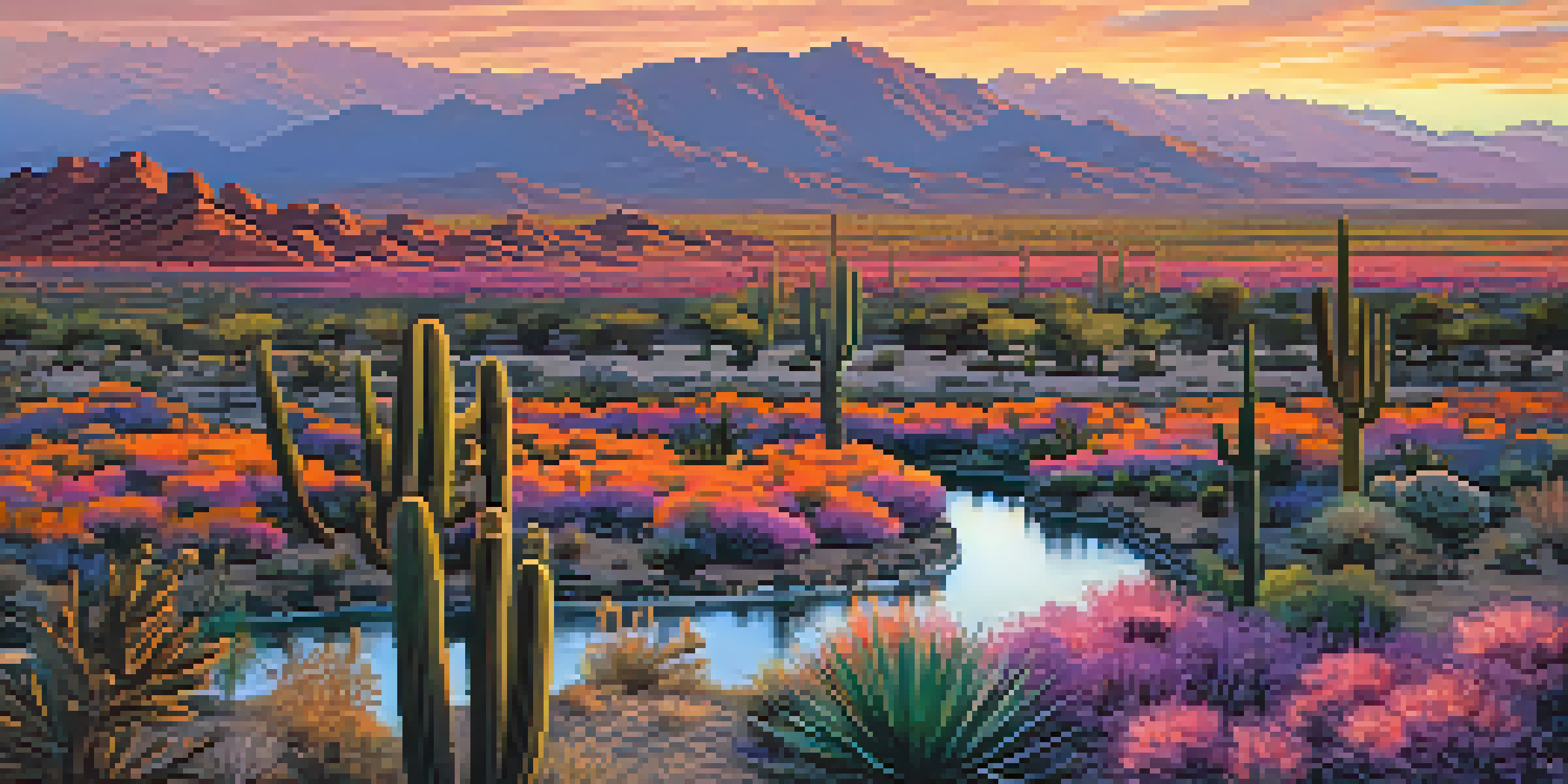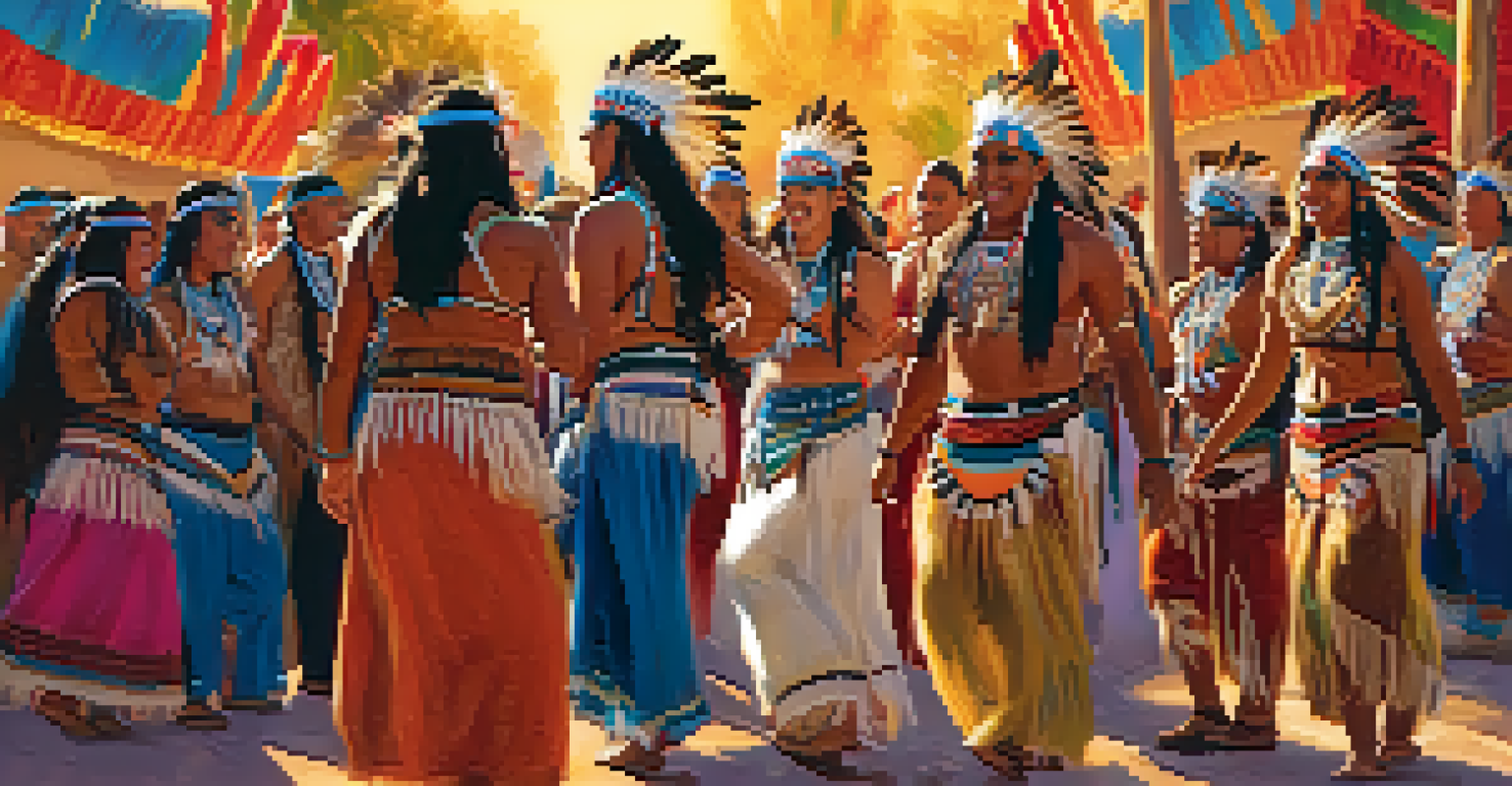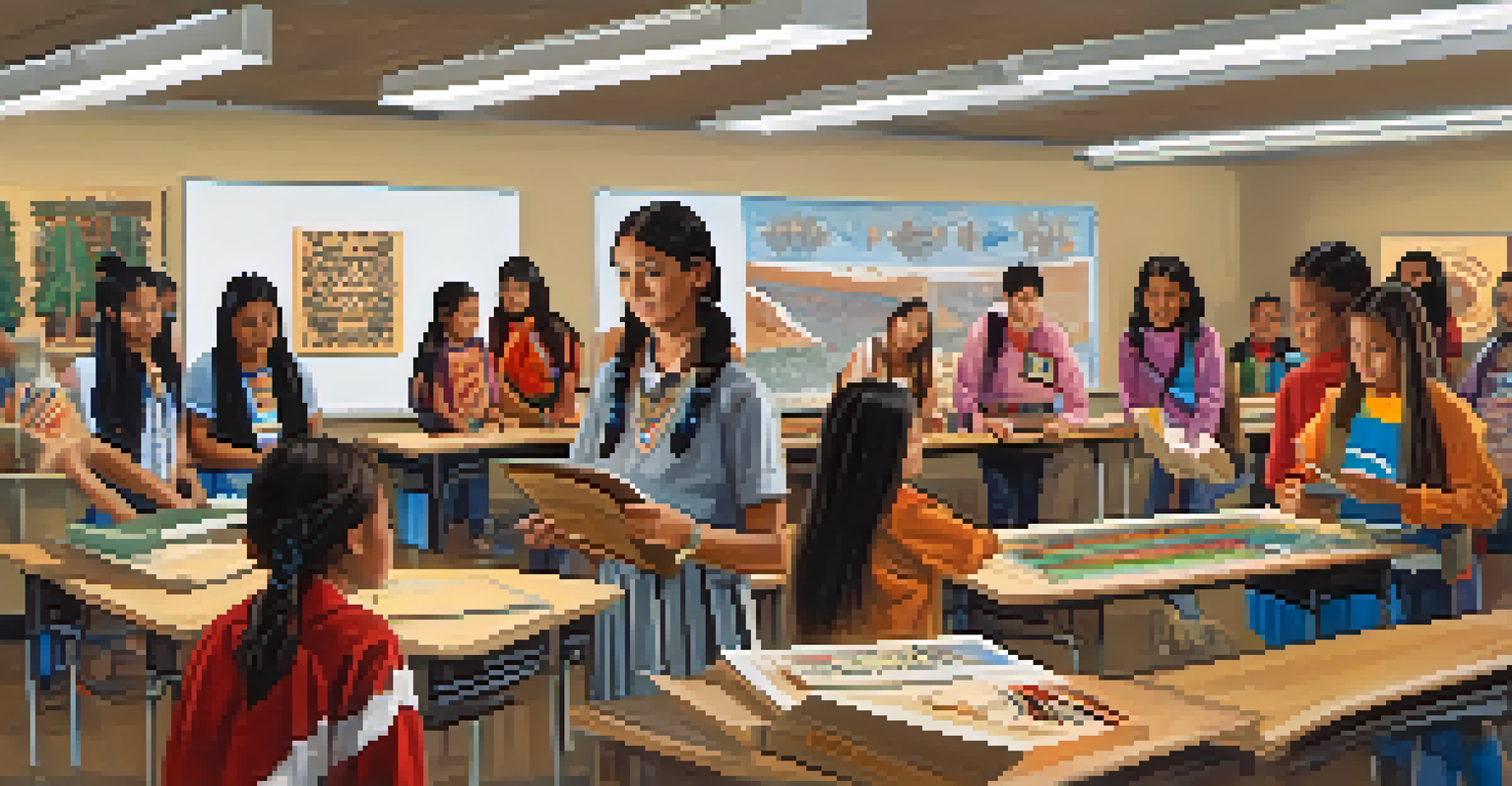Exploring the History of Native American Tribes in Phoenix

The Early Inhabitants of the Phoenix Area
Long before modern developments, the Phoenix Valley was home to various Native American tribes, notably the Hohokam. These early inhabitants thrived in the arid landscape, utilizing innovative irrigation techniques to cultivate crops such as corn, beans, and squash. Their sophisticated canal systems reflect a deep understanding of their environment and highlight their resilience.
A people without the knowledge of their past history, origin, and culture is like a tree without roots.
The Hohokam culture flourished from around 300 AD until approximately 1500 AD, leaving behind a legacy of artifacts and architectural remains. Interestingly, their name means 'those who have gone,' a testament to their eventual disappearance, which remains a subject of intrigue and study for historians. The impact of their agricultural practices laid the groundwork for future communities in the region.
Today, the remnants of Hohokam civilization can be explored at various archaeological sites, offering a glimpse into the daily lives of these early settlers. This rich history is not just a part of the past but continues to influence the cultural landscape of Phoenix today.
The Rise of the Akimel O’odham and Pee-Posh Tribes
Following the Hohokam, the Akimel O’odham (also known as the Pima) and the Pee-Posh (or Maricopa) tribes emerged as significant players in the Phoenix area. The Akimel O’odham excelled in agriculture, utilizing the Gila River for irrigation, while the Pee-Posh were known for their craftsmanship and trading skills. Together, these tribes shaped the socio-economic landscape of the region.

Cultural exchange between these tribes fostered a rich tapestry of traditions, languages, and practices, contributing to their resilience against external pressures. They adapted to the changing environment and faced challenges from both natural elements and incoming settlers, showcasing their strength and adaptability. Their community bonds and shared knowledge were vital for survival.
Legacy of Native American Cultures
The rich history of tribes like the Hohokam, Akimel O’odham, and Pee-Posh has profoundly influenced the cultural landscape of Phoenix.
Today, both tribes maintain a strong cultural identity and continue to contribute to the Phoenix community. Their stories, traditions, and contributions are celebrated, reminding us of the deep roots of Native American history in this vibrant area.
The Impact of European Colonization
The arrival of European settlers in the 19th century marked a significant turning point for Native American tribes in Phoenix. Colonization brought new challenges, including land dispossession, cultural disruption, and the introduction of foreign diseases that devastated indigenous populations. This era fundamentally altered the lives of the Akimel O’odham and Pee-Posh tribes.
Preservation of one's own culture does not require contempt or disrespect for other cultures.
Despite these hardships, Native American tribes displayed remarkable resilience. They adapted to new realities while striving to preserve their cultural heritage and languages. This period also witnessed the establishment of treaties, which, although often broken, laid the groundwork for future negotiations and rights recognition.
Today, the legacy of colonization is a complex narrative that continues to shape the identity and rights of Native American tribes. Understanding this history is essential for fostering a respectful dialogue about reconciliation and cultural revitalization in Phoenix.
Cultural Revitalization and Preservation Efforts
In recent decades, there has been a growing movement among Native American tribes to revitalize and preserve their cultural heritage. This includes language revitalization programs, traditional arts and crafts, and community gatherings that celebrate tribal identity. These efforts remind both tribes and the wider community of the richness of their cultural histories.
For instance, festivals and events showcasing traditional music, dance, and crafts have become popular in Phoenix, drawing in people from all walks of life. Such gatherings foster understanding, respect, and appreciation for the diverse cultures that make up the Phoenix community. They serve as a platform for tribal members to share their stories and keep their traditions alive.
Challenges of Modern Tribes
Native American tribes in Phoenix face ongoing challenges, including economic disparities and the fight for rights and recognition.
The commitment to cultural preservation is not just about maintaining the past; it’s about ensuring that future generations can connect with their heritage. This dedication enriches the cultural landscape of Phoenix, making it a more vibrant and inclusive place.
The Role of Native American Education in Phoenix
Education plays a crucial role in empowering Native American communities in Phoenix. Various initiatives focus on integrating indigenous perspectives into the curriculum, ensuring that students learn about their heritage and the contributions of their ancestors. This educational approach fosters pride and identity among young tribal members.
Moreover, partnerships between local schools and Native American organizations aim to create supportive environments for students. These collaborations often include mentorship programs, cultural workshops, and community service projects that engage students with their culture. By valuing indigenous knowledge, these programs encourage a sense of belonging and purpose.
As a result, Native American students in Phoenix are becoming advocates for their communities, using education as a tool for change. This empowerment not only benefits individuals but strengthens the entire community, paving the way for a brighter future.
Modern Challenges Facing Native American Tribes
Despite the progress made, Native American tribes in Phoenix continue to face modern challenges. Issues such as economic disparities, access to healthcare, and the preservation of sacred lands persist. These challenges are often compounded by historical injustices that have long-lasting effects on tribal communities.
The fight for rights and recognition is ongoing, with many tribes working tirelessly to address these issues at local and national levels. Grassroots movements and advocacy organizations are pivotal in raising awareness and pushing for policy changes that benefit tribal communities. Their efforts highlight the importance of solidarity and support from the wider community.
Cultural Preservation Efforts
Recent initiatives among Native American tribes focus on revitalizing traditions, fostering community pride, and enhancing cultural education.
Navigating these challenges requires resilience, collaboration, and a commitment to honoring the rights and dignity of Native American tribes. By acknowledging their struggles and supporting their initiatives, we can contribute to a more equitable future for all.
Celebrating Native American Contributions to Phoenix
The contributions of Native American tribes to the fabric of Phoenix are immense and deserve recognition. From art and music to agriculture and environmental stewardship, tribal members have enriched the community in countless ways. Celebrating these contributions fosters a greater understanding of the history and culture that shape the region.
Local galleries and cultural centers often showcase Native American artists, providing a platform for their work and stories. This visibility not only honors their talents but also educates the public about the depth of their cultural heritage. Engaging with this art offers insights into the experiences and perspectives of Native American communities.

By recognizing and celebrating these contributions, we embrace a more inclusive narrative that honors the diverse identities within Phoenix. Acknowledging the past while looking forward to a collaborative future is essential for fostering unity and respect among all community members.